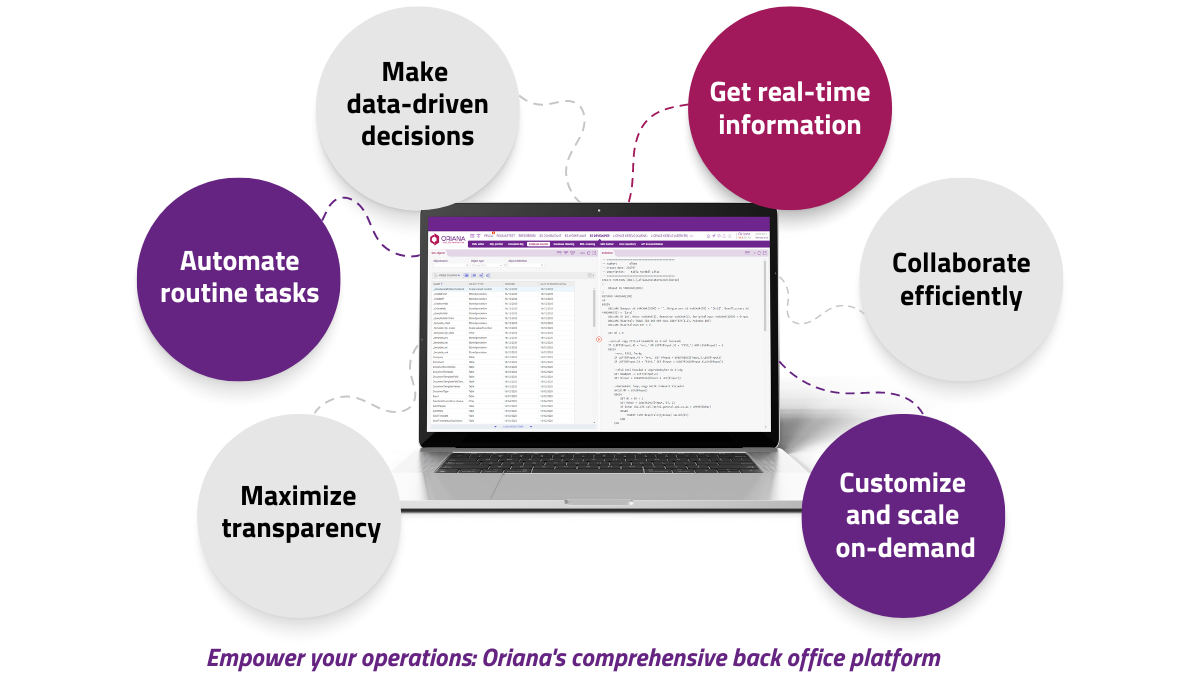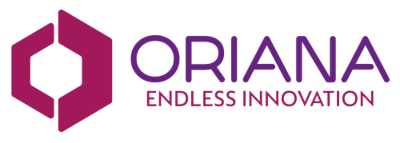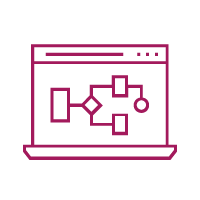In the complex ecosystem of modern business, using business administration software for effective management across various domains of the business is essential for sustainable growth.
But what exactly does business administration entail? In a nutshell, “business administration is the work of managing an organization’s resources, time, and people. Business administration professionals work to ensure that businesses and organizations are run effectively, efficiently and profitably.”
Company-to-company, business administration takes on different forms, but in most cases, it includes multiple functions, from human resources to procurement process optimization and other office administration tasks. As the corporate landscape continues to evolve, managing all of these aspects of the organization can become increasingly daunting.
In this post, we’ll look at some of the core functions of business administration and explore how low-code tools can help address some of the biggest pain points by automating tasks and simplifying administrative processes in an organization.
Building blocks of operations: The core functions a business administration software has to cover
Human resources management
Managing a workforce has evolved from simple personnel management to a strategic endeavor. In today’s human resources management, the main challenges are figuring out how to attract, retain, and develop top talent, accelerating the hiring process, while ensuring compliance with labor laws and fostering a positive work culture.
Procurement management
Procurement and inventory management rely on efficient forecasting, logistics, and strong vendor relationships. Synchronizing these elements in a global marketplace characterized by disruptions and shifting consumer demands is a challenge almost all organizations face today.
Facility management
Facility management involves all tasks related to managing the organization’s physical spaces, such as maintenance, security, and space utilization to ensure optimal functionality and safety. Efficient facility management enhances productivity in the workplace, employee well-being, and consequently, organizational success.
Technical developments
From designing and implementing software applications to optimizing IT infrastructure and cybersecurity protocols, technical development ensures that businesses keep up with technological advancements. As they increasingly rely on digital solutions to reach customers and streamline operations, the role of technical development becomes paramount in shaping the future trajectory of organizations.
Office management and other back-office functions
The key role of office management is to ensure smooth day-to-day operations while optimizing resource utilization. Office managers need versatile skill sets for a wide range of responsibilities, such as scheduling appointments, managing facilities, overseeing administrative tasks, handling documentation, and taking care of employees’ needs.
One platform, many possibilities: low-code business administration software for all your needs
While most organizations are already familiar with software solutions and their role in automating various aspects of business administration, many of them don’t quite know how to maximize their potential. A recent trend has emerged in favor of low-code solutions over traditional software options, thanks to their easy-to-use design, customizability, and ability to streamline multiple processes within a short timeframe.
One of the key advantages of a low-code business administration software is that it can be easily integrated with the company’s existing tech stack, as well as with third-party solutions — even for teams with limited coding skills.
And there’s more to it. Let’s see what a comprehensive, low-code business administration software solution can achieve:
Saving time by automating routine tasks: adding low-code business administration software to your tech suite can eliminate the need for manual data entry and repetitive, lengthy processes. As a result, employees get work done faster and can focus on the productive aspects of their day-to-day work.
Enabling data-driven decisions by providing more accurate insights: built-in data in low-code software solutions reduces the risk of human error, ensuring accurate financial records, employee information, and operational data.
Improving transparency by enabling real-time information: Low-code business administration software solutions also provide real-time access to critical information, facilitating transparency across different departments of an organization.
Promoting better collaboration and communication: Low-code software platforms enable seamless communication and collaboration between departments, fostering cross-functional alignment.
Future-proofing the company: By implementing low-code office management software, businesses can ensure efficient and customizable administrative processes that can keep up with changing demands, a growing team, and a scaling organization.

Conclusion
Effective management and transparent processes across different areas of business administration are more important than ever. Organizations face a wide range of challenges, from complex human resources and procurement systems to lagging operational efficiency and tedious day-to-day admin tasks.
The emergence of low-code enterprise business management software solutions has led to a real breakthrough in business administration. These easy-to-use and customizable tools automate processes, offer insightful data, and foster collaboration in a single platform, enabling businesses to make informed decisions, increase efficiency, and be equipped for future growth.
If you have any questions or want to learn more about Oriana’s business administration software, get in touch with us!
Fast, flexible & future-proof: the low-code software allows office management teams to implement custom applications quickly. These apps can address specific needs in a fraction of the time it would take to develop traditional software. Moreover, as you scale, you can always extend it with new functionality.
Endlessly customizable: the modular nature of low-code platforms enables easy adaptation to evolving requirements. As the office management landscape changes, these platforms can be modified or expanded to accommodate new tasks and responsibilities.
Easy integration: Oriana’s low-code platforms offer seamless integration with existing software systems, ensuring a cohesive and unified approach to automated office management. This integration minimizes data silos and enhances data accuracy.
Streamlined communication: Oriana’s solution facilitates seamless communication and collaboration among different teams. The graphical interface, easy dashboard creation, and reporting features ensure that employees remain connected and informed.
The power of office management software for streamlined back-office operations
Office management has completely transformed in the past few years, and while some traditional tasks have evolved or become less prominent, the core responsibilities of office management remain crucial to a company’s success.
The integration of office management software, especially low-code platform solutions is a game-changer in office management, enabling businesses to not only refine their operational efficiency but also improve collaboration among different teams. To navigate the constant challenges of the contemporary workplace, customizable office management software solutions will be essential for streamlined operational processes, better teamwork, and consequently, a better-functioning organization.



